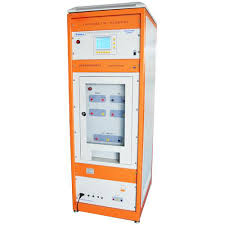What is a Surge Generator Distributor?
Surge Generator Distributor are often built for three-phase current and are mostly intended for short-duration functioning under short-circuit situations.
A surge generator is typically a two-pole, air-cooled turbine generator. These generators evaluate the switching capabilities and thermodynamic and electrodynamic stability of high-voltage apparatus. The tested device is directly or indirectly linked to the surge generator. It can be easily obtained from Surge generator distributors like surge generator distributor in India.
A surge is a momentary overvoltage in a power source caused by events such as load switching, device failures, capacitor bank switching, and lightning discharges in electrical/electronic circuits. Typically, the spike lasts only a few seconds to a few milliseconds. Surge waveforms can sometimes be oscillatory or impulsive, with the increasing wavefront typically lasting between 0.5 and 10 seconds.
Usage of Surge Generator Distributor:
Sudden lightning strikes above electrical wires create the strongest surges. Surges entering a plant generally vary between 10 and 50 kV. Because this surge voltage can severely harm electrical/ electronic devices, testing devices for surge resistance is vital.
A surge generator is a combination surge current/voltage generator that creates a typical surge volt waveform with a pulse of 1.2 / 50 s and a surge current with a pulse shape 8 / 20 s in the idle mode to evaluate a product’s surge immunity in a controlled testing setup. The surge immunity standard is IEC/EN61000-4-5, an EMC standard. Surge generators are usually built to the IEC/EN61000-4-5 standard.
Typically, the surge immunity test is mostly performed with the use of CDN or Coupling decoupling networks. The CDNs connect a surge generator to the instrument or equipment under test abbreviated as EUT and keep harmful voltages from entering the alternating current power system.
Generation of Surge Voltage Waveform:
To ensure that equipment meant for use on high voltage lines and others can survive surges created during operation, these devices must be mainly tested with voltages that are likely to be able to encounter in service.
The impulse generator is the device that generates the appropriate voltages. In high voltage science and engineering, an impulse voltage is often a unidirectional voltage that climbs swiftly to a peak value and then declines less rapidly to zero. A full impulse wave develops its whole wave structure without flashover or puncture, but a chopped wave experiences a flashover, causing the voltage to decrease exceedingly quickly.
Generation of Impulse Current Generator Output Waveform:
Lightning discharges on transmission lines entail both high voltage and high current impulses. Surge diverters, for example, must discharge lightning currents without causing damage. As a result, the generation of high-magnitude Impulse Current Generator Output Waveforms (100 kA peak) finds application in both test work and fundamental research on non-linear resistors.
The waveforms utilized in surge diverter testing are 4/10 and 8/20 s, with the values reflecting the nominal wave front and wave back periods, respectively. The tolerances on them are only 10%. In addition to the typical Impulse Current Generator Output Waveform, long-duration rectangular wave employment is for testing.
The form of the waves should be roughly rectangular. The rectangular waves have lengths ranging from 0.5 to 5 ms, with ascent and fall periods accounting for less than 10% of the entire duration. The maximum tolerance for the peak value is +20% and -0%. The peak value may be greater than but not less than the stated value. The wave’s duration is usually definable as the complete period when the current is at a minimum of 10% of its peak value.
Parameters for surge generators:
Surge voltage pulse shape:
The typical surge voltage waveform 1.2 s 30% / 50 s 20% is mostly for representation. In this case, 1.2 s indicates the time it takes to achieve peak amplitude, and 50 s is the time it takes to reach 50% peak value from peak amplitude.
Surge current pulse form:
This is the normal surge current waveform of 8 s 20% / 20 s 20%. Time 8 s denotes the time it takes to achieve peak amplitude, whereas time 20 s represents the time it takes to reach 50% peak value from peak amplitude.
Pulse current:
The peak magnitude of the current spike in KA that the surge generator distributor can deliver.
Maximum retained energy:
This value represents the surge generator’s capacitors’ maximum/total energy storage. Joules as a unit is applicable for calculation.
The polarity of output voltage or current:
Specifies the polarity of the surge generator’s output voltage/current. surge generator Distributor in Delhi may create voltage/current impulses in positive, negative, or alternating polarity.


